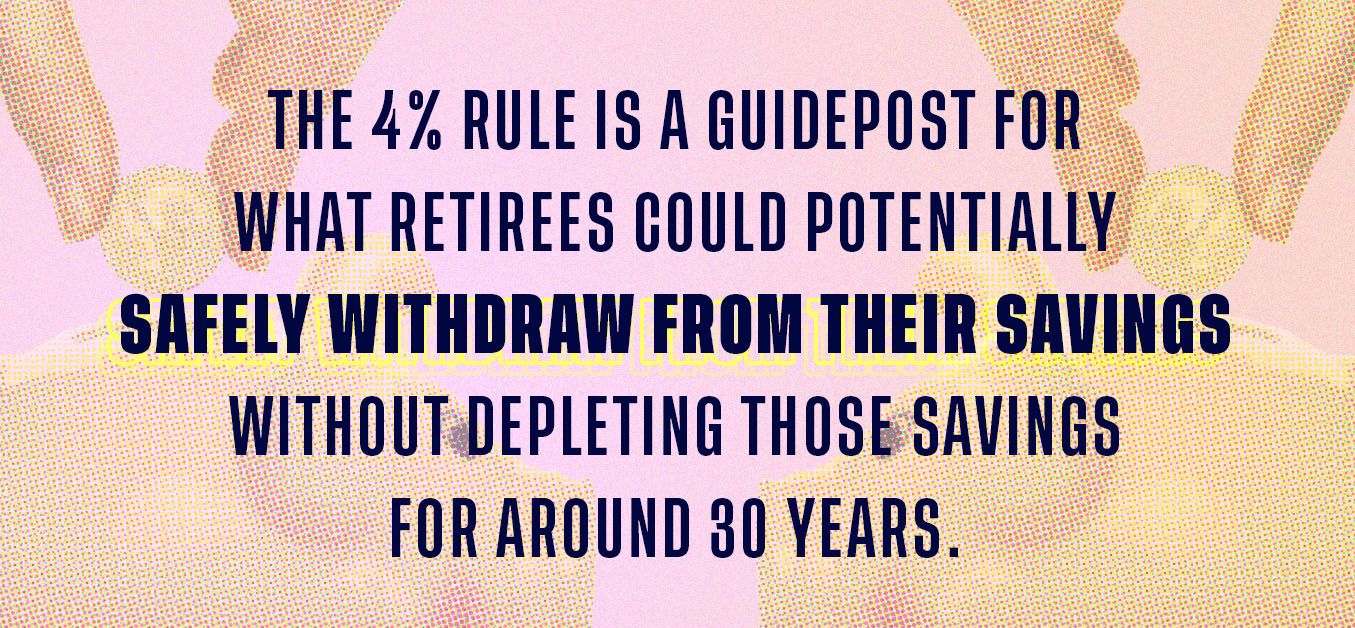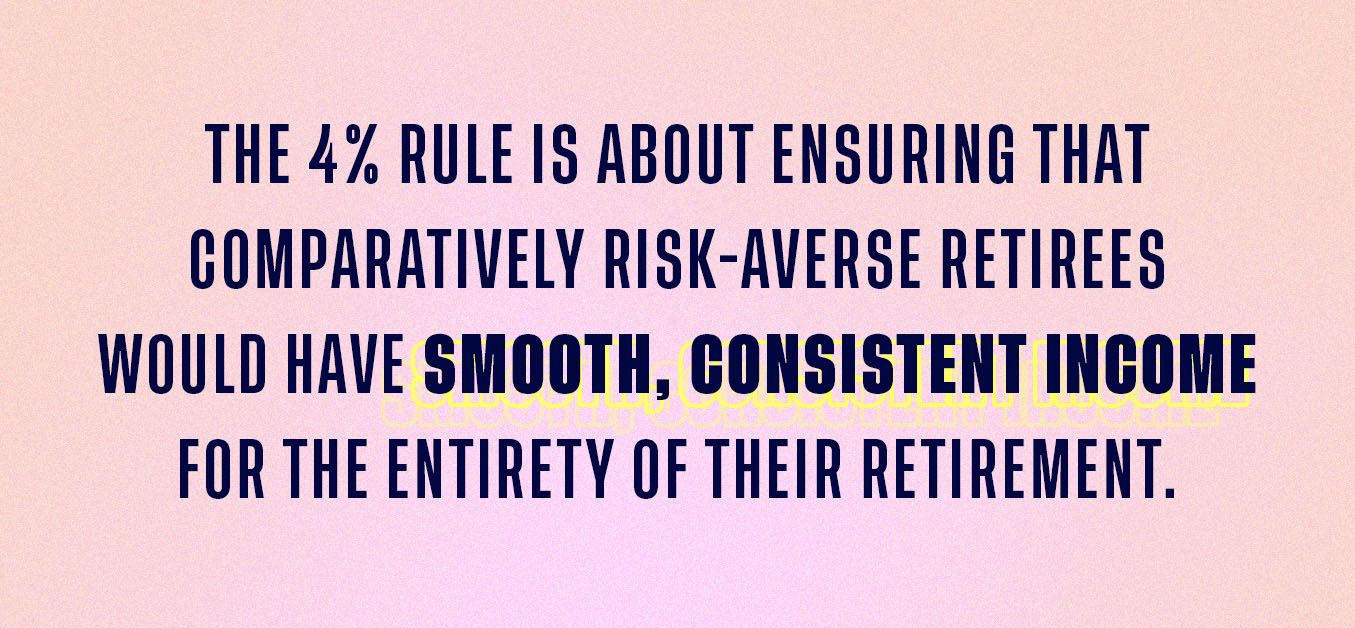What’s the 4% Rule?
When we retire, we hope to have lots of cash in the bank. That amount is, after all, what we’ll need to live off for the rest of our lives.
(This is why it’s so important to start saving and investing for your retirement early. Dare you to put $10 into your retirement fund today. Dare you!!)
There are a few theories out there on how to make your retirement savings last. One of the most popular is the 4% Rule, which expresses how much of your retirement savings you could safely theoretically withdraw every year without ever worrying you would outlive your savings.
Grim? A bit. But that’s life, kid.
What is the 4% Rule?

This rule was created in 1994 by a financial advisor named William Bengen. Bengen’s idea was to take a theoretical retirement savings fund—made up of 50% large-cap stocks and 50% intermediate Treasury Bonds—and, using the most conservative year for market growth in his data set, figure out how those funds might grow over time.
With that estimation, he was able to determine that withdrawing about 4% of one’s retirement savings annually should mean that one’s funds would last the typical length of a retirement in a variety of different economic circumstances.
This rule balances how retirement portfolios would be projected to grow over time with those annual withdrawals.
This rule has kind of been misrepresented in some places as “living off interest,” where a theoretical annual return of 4% would enable a retiree to never touch the principal balance, but that’s a bit of a different idea and isn’t Bengen’s work.
His is much more complicated, and also probably more true.
How Does the 4% Rule Work?

This number is usually clocked at about 30 years.
Essentially, the 4% Rule anticipates or assumes a “safe” return on a retirement savings portfolio with the intention of extending that retirement fund out until, well, one returns whence they came.
According to Bengen, this number is a safe withdrawal rate, meaning its primary goal is ultimately to minimize risk. Bengen arrived at 4% after calculating a bunch of hypothetical initial withdrawal rates for retirements beginning every year from 1926 to 1976. The worst performing year in Bengen’s data was 1968.
It was this year that Bengen used to base his safe withdrawal benchmark—meaning 4% withdrawal would see a retirement investment portfolio last for 30 years, even under those poorer market conditions.
H2 Will the 4% Rule Work For Me?
Maybe!
There are two big reasons the 4% Rule may not be a good strategy. These two reasons are contingent upon one’s risk aversion. The success of this rule is also contingent upon the makeup of your retirement portfolio.
The 4% Rule is about creating a constant income for the entirety of the retirement, and is intended to create peace of mind for retirees that they’ll be supported through their old age. So basically, at a retirement age of 65, one would earn the same annually as they would at age 90.

But if one is more flexible with annual spending, a bit less risk averse, and is willing to pursue an optimal withdrawal rate (rather than perhaps what could be considered to be a safer withdrawal rate), there’s a buddy to this lil’ theory that might serve you well: the 7% Rule.
The 7% Rule (which encompasses annual withdrawal rates of between 5% and 7%) is about spending a bit more early on in retirement, when a retiree might be more interested in travelling or havin’ fun with the gals. This rule operates under the assumption that a retiree will spend less later in life.
The primary difference between these two modes of retirement spending (of which there are many!) is their flexibility. With the 4% Rule, a retiree would intend to be locked in for life. With the 7% Rule, a retiree may spend more when the market does well, or spend less when it underperforms.
But remember—without solid retirement savings, a 4% withdrawal rate may not be enough to live on. That’s why it’s so important to start saving now. Just stick to your retirement savings plan, watch your wealth grow, and then choose the retirement lifestyle that you think is the best fit for you.
Want to learn more about building wealth for retirement? Check out our MoneyClass below!
| GO TO MONEYCLASS |
This blog is provided for informational purposes only, isn’t intended as investment advice, and isn’t meant to suggest a particular investment or strategy is suitable for any particular investor. If you’re unsure about an investment or saving for retirement, you may wish to obtain investment advice from a qualified professional.